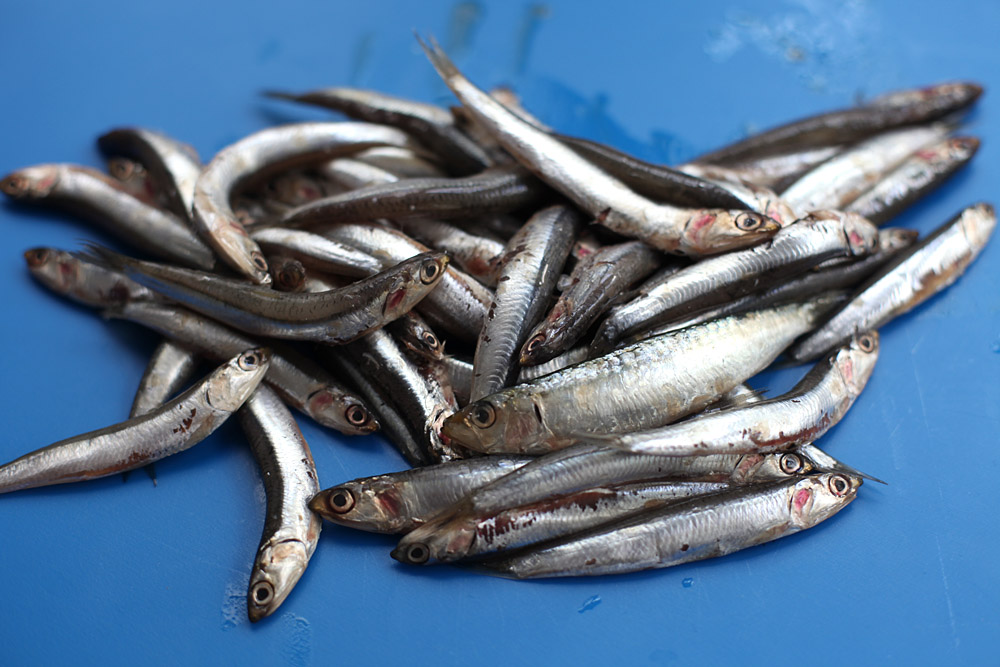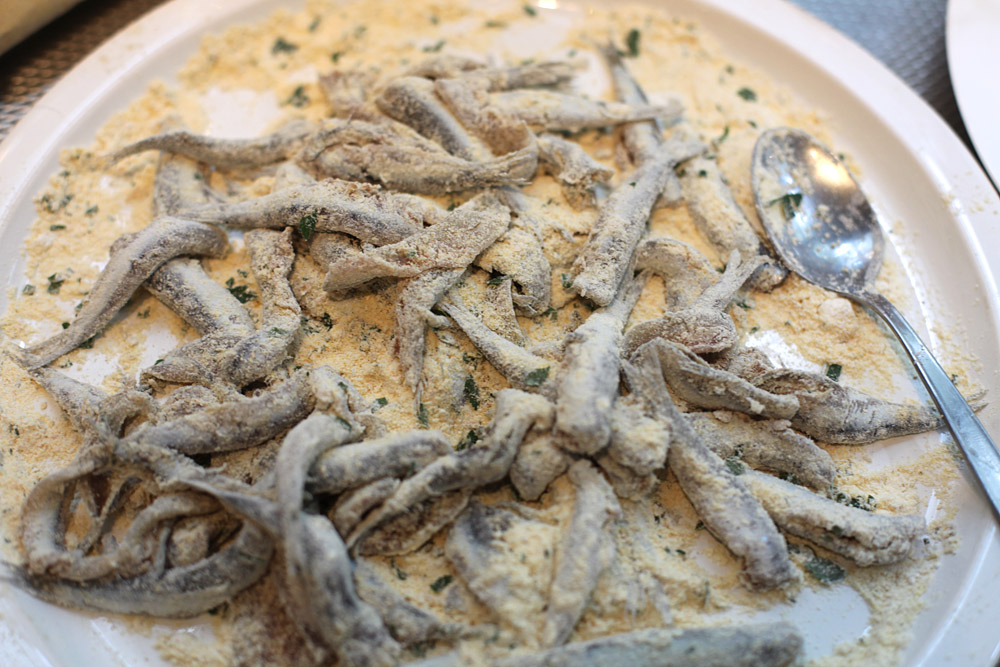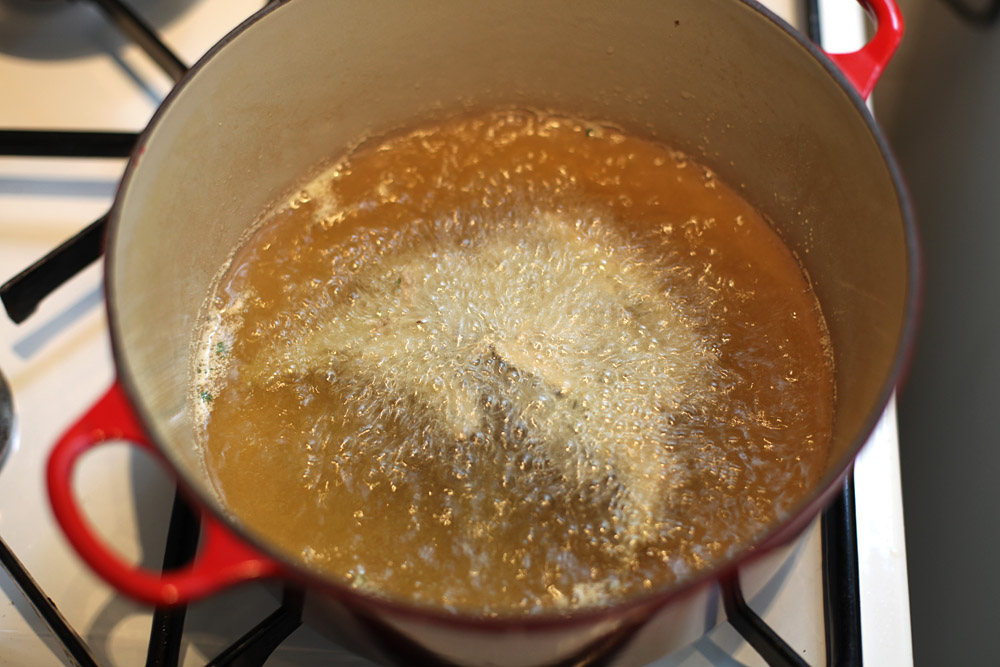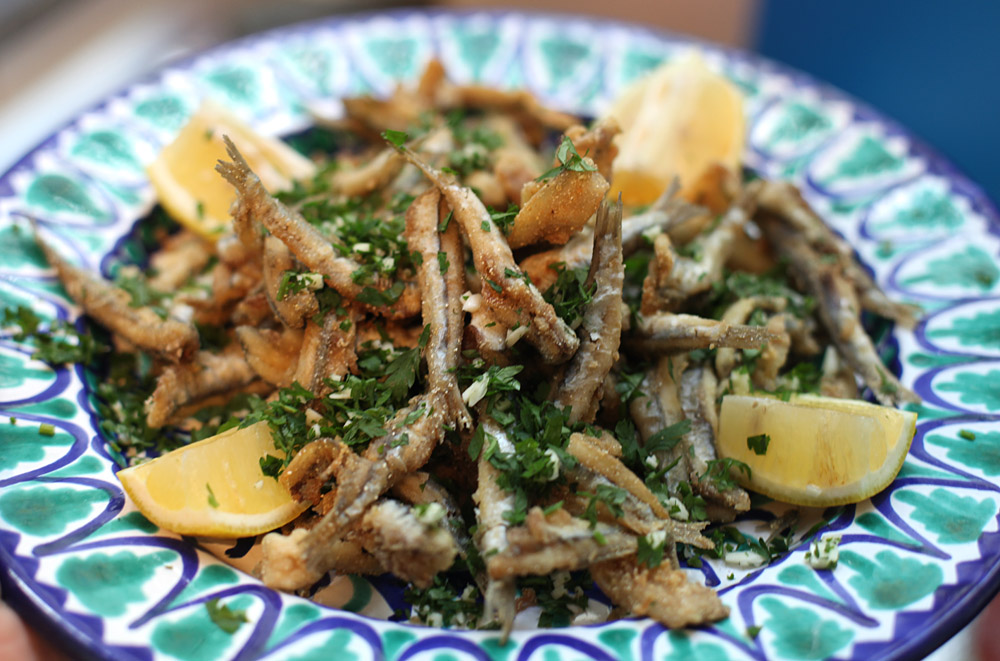Bigos (Polish hunter's stew)
Typical of a hunter's stew, there is no fixed recipe. Bigos is a national dish of Poland and the Ukraine, but is also eaten in Latvia and Belarus. Bigos is a cabbage and meat stew.
This is my version:
Basic vegetables:
Sauerkraut.
A small white cabbage, shredded.
Onion.
Garlic.
Meat:
Smoked pork belly, cubed.
Ham (Polish shop), cubed.
Kiełbasa sausage (Polish shop), whole.
Meat is an important aspect of this dish. You can use any kind of meat or meat leftovers. Traditionally this would be a hunter's stew so game works well, but pork is also very tasty. I wasn't sure what kind of sausage to use, so I went to a Polish shop in Amsterdam and was sold the sausage below and a cut of ham. The pork belly is Dutch 'gerookt ontbijtspek'.
Other ingredients:
Dried Boletus edulis (Dutch: eekhoorntjesbrood).
Dried prunes, chopped.
Apple, cubed.
Tomato, cubed.
Small can tomato puree.
White wine, a glass. If you make the version with game instead of pork use red wine instead of white wine.
Spices:
Bay leaf.
Allspice (=piment), freshly ground.
Black peppercorns.
Juniper berries.
Caraway seeds.
First shred the cabbage and simmer for one hour in water. Drain and preserve the water.
Fry the smoked pork belly in some butter or oil. Remove the pork belly and use the fat to sauté the onion and garlic. Add the rest of the meat except the Kiełbasa (in this case just the ham). Then add all the other ingredients and return the pork belly to the pot. I also added the soaking water of the mushrooms. If you need more liquid use the water used for simmering the cabbage. Add the Kiełbasa on top. The bigos I had in Poland was rather dark in colour, so I added a small can of tomato puree. Simmer for at least three hours.



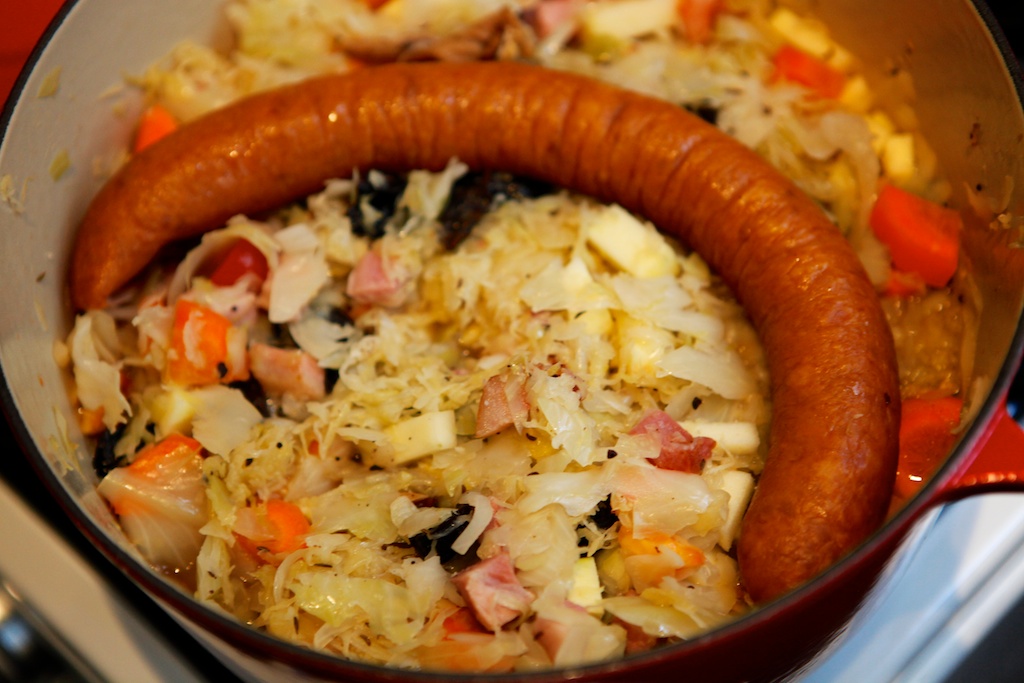


Cool, store the bigos in a cold place, heat again, cool, heat and eat on the third day. Well, if you're patient enough. Serve with rye bread and mustard.
































